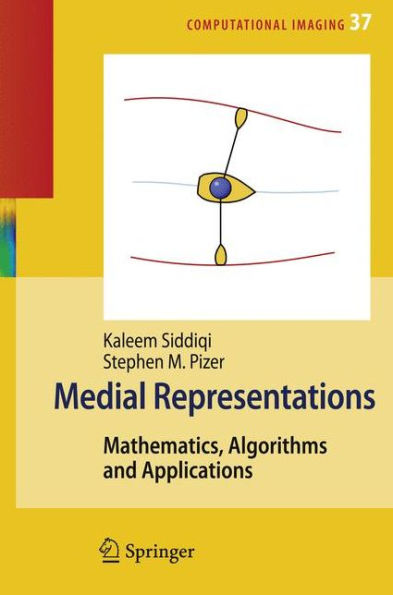The last half century has seen the development of many biological or physical t- ories that have explicitly or implicitly involved medial descriptions of objects and other spatial entities in our world. Simultaneously mathematicians have studied the properties of these skeletal descriptions of shape, and, stimulated by the many areas where medial models are useful, computer scientists and engineers have developed numerous algorithms for computing and using these models. We bring this kno- edge and experience together into this book in order to make medial technology more widely understood and used. The book consists of an introductory chapter, two chapters on the major mat- matical results on medial representations, five chapters on algorithms for extracting medial models from boundary or binary image descriptions of objects, and three chapters on applications in image analysis and other areas of study and design. We hope that this book will serve the science and engineering communities using medial models and will provide learning material for students entering this field. We are fortunate to have recruited many of the world leaders in medial theory, algorithms, and applications to write chapters in this book. We thank them for their significant effort in preparing their contributions. We have edited these chapters and have combined them with the five chapters that we have written to produce an integrated whole.
1101238701
Medial Representations: Mathematics, Algorithms and Applications
The last half century has seen the development of many biological or physical t- ories that have explicitly or implicitly involved medial descriptions of objects and other spatial entities in our world. Simultaneously mathematicians have studied the properties of these skeletal descriptions of shape, and, stimulated by the many areas where medial models are useful, computer scientists and engineers have developed numerous algorithms for computing and using these models. We bring this kno- edge and experience together into this book in order to make medial technology more widely understood and used. The book consists of an introductory chapter, two chapters on the major mat- matical results on medial representations, five chapters on algorithms for extracting medial models from boundary or binary image descriptions of objects, and three chapters on applications in image analysis and other areas of study and design. We hope that this book will serve the science and engineering communities using medial models and will provide learning material for students entering this field. We are fortunate to have recruited many of the world leaders in medial theory, algorithms, and applications to write chapters in this book. We thank them for their significant effort in preparing their contributions. We have edited these chapters and have combined them with the five chapters that we have written to produce an integrated whole.
54.99
In Stock
5
1

Medial Representations: Mathematics, Algorithms and Applications
439
Medial Representations: Mathematics, Algorithms and Applications
439Paperback(Softcover reprint of hardcover 1st ed. 2008)
$54.99
54.99
In Stock

Product Details
| ISBN-13: | 9789048179466 |
|---|---|
| Publisher: | Springer Netherlands |
| Publication date: | 12/16/2010 |
| Series: | Computational Imaging and Vision , #37 |
| Edition description: | Softcover reprint of hardcover 1st ed. 2008 |
| Pages: | 439 |
| Product dimensions: | 6.10(w) x 9.25(h) x 0.04(d) |
From the B&N Reads Blog
